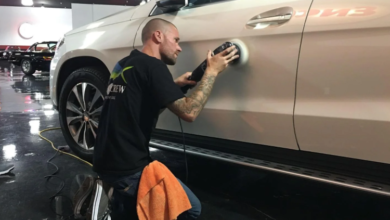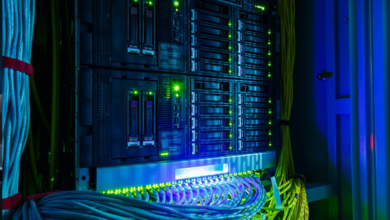How to Choose the Right Dissecting Microscope for Your Lab

Introduction
Selecting the perfect dissecting microscope for your laboratory is a critical decision that can significantly impact your research quality and productivity. Whether you’re working in biology, medicine, electronics, or quality control, the right stereo microscope serves as an essential tool for detailed examination and precise manipulation of specimens.
The market offers numerous options with varying features, magnifications, and price points. This comprehensive guide will walk you through every aspect you need to consider when choosing a dissecting microscope that perfectly matches your laboratory’s specific requirements and budget constraints.
Understanding Dissecting Microscopes
Dissecting microscopes, also known as stereo microscopes, provide three-dimensional views of specimens at relatively low magnifications. Unlike compound microscopes that examine thin, transparent specimens, these instruments excel at observing opaque, thick objects with remarkable depth perception.
These microscopes utilize two separate optical paths, creating the stereoscopic effect that makes them invaluable for dissection work, circuit board inspection, and quality control applications. The dual eyepiece system allows users to perceive depth and manipulate specimens with precision while maintaining visual clarity.
Modern dissecting microscopes incorporate advanced optical technologies that deliver superior image quality, enhanced contrast, and exceptional color reproduction. Understanding these fundamental principles helps laboratory professionals make informed decisions when selecting equipment.
Key Features to Consider
When evaluating dissecting microscopes, several critical features demand careful consideration. The optical system quality directly impacts image clarity, resolution, and color accuracy. High-quality lenses with anti-reflective coatings provide superior performance and reduce eye strain during extended use periods.
Working distance represents another crucial specification. This measurement indicates the space between the objective lens and specimen, determining how much room you have for manipulation tools and specimen positioning. Longer working distances offer greater flexibility but may compromise image brightness.
The zoom ratio defines the magnification range available without changing objectives. Higher zoom ratios provide more versatility, allowing seamless transitions between different magnification levels during examination procedures.
Types of Dissecting Microscopes
Fixed magnification microscopes offer predetermined magnification levels, typically providing two or three specific settings. These models deliver excellent optical performance at their designated magnifications and often represent more economical choices for laboratories with consistent magnification requirements.
Zoom microscopes provide continuous magnification adjustment within their specified range. This flexibility makes them ideal for applications requiring frequent magnification changes or detailed examination at multiple levels. The smooth zoom operation enhances workflow efficiency.
Modular systems allow customization through interchangeable components, including different objectives, eyepieces, and illumination systems. These versatile platforms can adapt to changing laboratory needs and accommodate specialized applications through accessory additions.
See also: The Intersection of Health and Technology: Advancements in Medical Tech
Magnification Range Requirements
Determining your required magnification range involves analyzing your typical specimen sizes and examination requirements. Lower magnifications, ranging from 5x to 20x, work well for larger specimens, initial surveys, and manipulation tasks requiring extensive working space.
Medium magnifications, spanning 20x to 50x, serve most routine dissection and inspection applications. This range provides adequate detail resolution while maintaining reasonable working distances and field of view dimensions.
Higher magnifications, extending from 50x to 100x or beyond, become necessary for fine detail examination, small component inspection, and precision measurement tasks. However, increased magnification typically reduces working distance and field of view.
Lighting Systems and Their Importance
Proper illumination significantly impacts image quality and user experience. Incident lighting, positioned above the specimen, works best for opaque objects and surface examination. LED systems have largely replaced traditional halogen sources due to their longevity, energy efficiency, and consistent color temperature.
Transmitted lighting, positioned below translucent specimens, enhances internal structure visibility. Some microscopes offer dual lighting systems, providing maximum flexibility for various specimen types and examination requirements.
Advanced lighting features include intensity control, which prevents specimen damage and optimizes contrast, and oblique illumination options that enhance surface texture visualization and three-dimensional appearance.
Ergonomics and User Comfort
Extended microscopy sessions can cause significant physical strain without proper ergonomic design. Adjustable eyepiece tubes accommodate different user heights and viewing angles, reducing neck and back stress during prolonged use.
Interpupillary distance adjustment ensures comfortable binocular viewing for users with different eye spacing. This feature becomes particularly important in shared laboratory environments where multiple users operate the same instrument.
Stage design affects workflow efficiency and user comfort. Smooth, precise controls for specimen positioning reduce fatigue and improve examination accuracy. Some models include rotating stages for comprehensive specimen examination.
Budget Considerations and Value
Microscope pricing varies dramatically based on optical quality, features, and brand reputation. Entry-level models suitable for basic applications typically range from several hundred to a few thousand dollars, making them accessible for educational institutions and startup laboratories.
Mid-range instruments offer enhanced optical performance, additional features, and improved durability. These models often provide the best value proposition for established laboratories with moderate budgets and standard requirements.
Premium microscopes incorporate cutting-edge optical technologies, advanced illumination systems, and comprehensive accessory options. While expensive, these instruments deliver exceptional performance and longevity that justify their higher cost in demanding applications.
Brand Reputation and Reliability
Established microscope manufacturers typically offer superior build quality, comprehensive warranties, and reliable customer support. Researching brand reputation through user reviews, professional recommendations, and industry publications provides valuable insights into long-term satisfaction and reliability.
Service and support availability becomes crucial for maintaining optimal instrument performance. Brands with extensive service networks and readily available spare parts ensure minimal downtime and extended instrument life.
Warranty terms and coverage vary significantly between manufacturers. Comprehensive warranties covering both parts and labor provide peace of mind and protect against unexpected repair costs during the initial ownership period.
Maintenance and Longevity
Regular maintenance ensures optimal performance and extends instrument life. Simple cleaning procedures, proper storage, and routine calibration checks prevent common problems and maintain image quality over time.
Quality microscopes can provide decades of reliable service with appropriate care. Understanding maintenance requirements and associated costs helps evaluate the total cost of ownership beyond the initial purchase price.
Some manufacturers offer maintenance contracts that include regular service visits, priority repair support, and discounted parts replacement. These programs can be particularly valuable for critical applications where downtime must be minimized.
Making the Final Decision
Comparing multiple models requires systematic evaluation of specifications, features, and pricing. Creating a detailed comparison matrix helps identify the models that best match your specific requirements and budget constraints.
Hands-on evaluation through dealer demonstrations or trial periods provides invaluable insights into real-world performance and user experience. Testing with your actual specimens under typical working conditions reveals practical advantages and limitations.
Consider future needs and potential applications when making your selection. Investing in slightly more capability than currently required can accommodate growing demands and changing requirements without necessitating premature replacement.
Certified Material Testing Products (Certified MTP) is a leading supplier of construction materials testing equipment and laboratory supplies in the United States. They offer a comprehensive range of products for testing concrete, asphalt, aggregate, soil, and cement, catering to both field and laboratory applications. However, regardless of whether they are preferred or not, the underlying concept behind these tools is similar: achieving a polished, shiny, and permanent effect. Whether new to stucco or a seasoned pro, investing in quality tools and learning the nuances of their use is what will help you perfect your craft.
Frequently Asked Questions (FAQ)
What magnification range do I need for biological dissection?
Most biological dissection work requires magnifications between 10x and 40x. This range provides sufficient detail for anatomical studies while maintaining adequate working distance for dissection tools. Consider your specimen sizes and required detail levels when determining optimal magnification requirements.
How important is working distance in dissecting microscopes?
Working distance is crucial for applications requiring specimen manipulation. Longer working distances, typically 60mm or more, provide ample space for dissection instruments and reduce the risk of accidentally contacting the objective lens with tools or specimens.
Should I choose LED or halogen illumination?
LED illumination offers significant advantages including longer life, lower heat generation, consistent color temperature, and energy efficiency. While initial cost may be higher, the long-term benefits typically justify the investment for most laboratory applications.
What’s the difference between fixed and zoom magnification systems?
Fixed magnification systems offer predetermined magnification levels with excellent optical performance at each setting. Zoom systems provide continuous magnification adjustment within their range, offering greater flexibility but potentially at slightly higher cost and complexity.
How do I determine the right eyepiece magnification?
Eyepiece selection depends on your objective magnification and desired total magnification. Standard 10x eyepieces work well for most applications. Higher magnification eyepieces increase total magnification but may reduce field of view and image brightness.
What accessories should I consider?
Essential accessories include stage plates for different specimen types, additional lighting options, measurement systems if quantitative work is required, and camera adapters for documentation purposes. Evaluate your specific workflow requirements when selecting accessories.
How often does a dissecting microscope need calibration?
Regular calibration isn’t typically required for basic dissecting microscopes. However, instruments used for measurement applications should be checked periodically using certified calibration standards to ensure accuracy.
What warranty coverage should I expect?
Quality microscopes typically include at least one year warranty covering parts and labor. Premium models may offer extended warranty periods. Consider service availability and response times when evaluating warranty terms.
Can I upgrade my microscope later?
Modular systems allow component upgrades and accessory additions. However, fundamental optical system improvements typically require complete instrument replacement. Consider future needs when making your initial selection.
How do I maintain optimal performance?
Regular cleaning of lenses and surfaces, proper storage in dust-free environments, and avoiding extreme temperatures help maintain performance. Follow manufacturer guidelines for specific maintenance procedures and schedules to ensure longevity.




